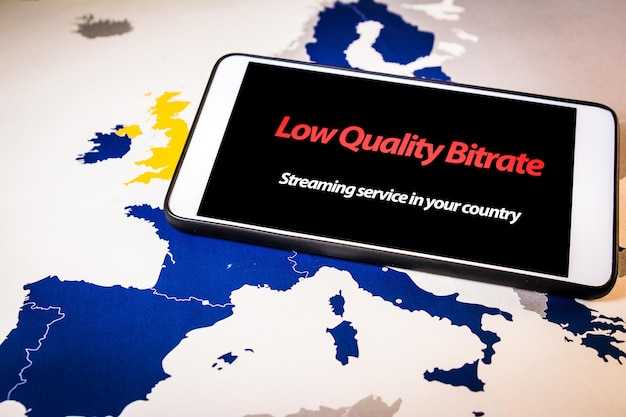European carriers are navigating a complex landscape of increasing online demand, stringent security requirements, and evolving payment ecosystems. This introduction outlines how leading European logistics and courier providers are securing online orders while preserving customer experience and operational efficiency.
Across markets, carriers pursue a common goal: to prevent fraud, ensure compliant data handling, and provide a reliable checkout that scales from peak seasons to routine deliveries. These case studies examine practical implementations, from authentication workflows to real-time risk scoring, that reduce risk without slowing the order path.
Key strategies emerge: multi-factor authentication, tokenization of payment data, és secure by design API architectures that enable partner integrations without exposing sensitive systems. European entities leverage PSD2 frameworks and GDPR-aligned data flows to balance security with privacy.
The selected cases highlight standardized yet adaptable patterns: centralized identity services for carriers, modular payment gateways, and observability that turns data into actionable risk signals. Each study shows how cloud-native platforms and containerized services support rapid deployment of security features across fleets and warehouses.
Outcomes include lower order abandonment, faster fulfillment cycles, and higher customer trust–all achieved by combining policy, people, and technology. By comparing diverse European contexts, readers gain a practical blueprint for implementing secure, scalable online orders in the logistics sector.
Evaluating Payment Security: 3-D Secure, SCA, and PCI DSS in European Carrier Checkouts

In European carrier checkouts, payment security rests on three pillars: 3-D Secure authentication, Strong Customer Authentication (SCA) under PSD2, and PCI DSS compliance. Coordinated across multi-platform checkouts, couriers, and freight platforms, these controls aim to prevent fraud while preserving a smooth buying experience for customers and shippers.
3-D Secure (often branded as 3-D Secure vagy 3DS) is an authentication protocol that adds an extra verification step for cardholders during online checkout. The original 3DS1 offered a browser redirect to the issuer to complete a challenge, often causing friction. The current standard, 3-D Secure 2.0 introduces a seamless, device-based flow, risk-based authentication, and support for in-app and mobile wallets. It leverages biometrics, device fingerprinting, and contextual data to decide whether a challenge is required. If the transaction passes risk checks, the user may complete authentication in the background, reducing cart abandonment while maintaining fraud controls. If a challenge is needed, the issuer can request a frictionless or a separate biometric/pin verification step depending on risk profile.
SCA requires at least two of three factors: something the customer knows, has, or is. In the EU, PSD2 mandates SCA for most online payments, including those processed by carriers for e-commerce shipments. The goal is reduce fraud and improve liability protection. Implementations typically pair 3-D Secure with ongoing risk-based monitoring. Exemptions exist, such as low-value transactions (under €30 with cumulative thresholds), recurring payments for subscriptions, trusted beneficiaries, és trusted device scenarios, or exemptions granted by the terminal or payment gateway under conditions. When exemptions apply, merchants may avoid a challenge, but they must maintain evidence trails and support fallback paths in case the issuer requires re-authentication. For carriers, SCA impact varies by shipment value, destination country, and risk profile, necessitating flexible checkout logic and real-time decisioning.
PCI DSS governs how cardholder data is stored, processed, and transmitted. Carriers should ensure data minimization by using a tokenization framework and relying on PCI-compliant payment gateways or service providers for card data processing. Depending on how the card data flows, merchants may fall under different PCI DSS scope levels and SAQ types: SAQ A for merchants that entirely outsource card data handling, SAQ A-EP for those with some e-commerce processing that does not store sensitive data, and SAQ D for merchants with complete card data processing in-house. Core requirements include maintaining a secure network, protecting and encrypting cardholder data, implementing access controls, monitoring networks, performing vulnerability scanning, and maintaining security policies and incident response procedures. Regular validation by a PCI DSS assessor or a trustworthy service provider is essential to sustain compliance over time.
Implementation considerations for European carriers include selecting a PSP (payment service provider) that supports 3-D Secure 2.0 and SCA-compliant flows across multiple card schemes and markets, standardizing the checkout for cross-border shipments, and ensuring the tokenization footprint never exposes the full card number. Use of Frictionless flow via 3DS2 may be feasible for low-risk shipments; otherwise, configure a clear, user-friendly challenge path. Aligning with PCI DSS means configuring access control to limit card data exposure, securing APIs, encrypting data in transit with TLS 1.2+, and segregating the card data environment from other systems. Regular security testing, including vulnerability scanning and penetration testing, should be scheduled, with incident response playbooks updated for carrier-specific scenarios such as lost shipments or payment disputes.
In practice, successful carrier implementations merge PSP capabilities with internal risk rules, enabling dynamic authentication prompts based on shipment parameters, destination risk, and customer history. Monitoring dashboards should track fraud rate, authorization declines due to SCA, user drop-off during authentication, and PCI DSS audit readiness. When integrating with multiple carriers and markets, standardizing data formats, ensuring consented authentication, and maintaining a single point of truth for payment status help reduce discrepancies across shipments and billing cycles.
Ultimately, evaluating payment security in European carrier checkouts requires balancing fraud protection és customer experience, while maintaining regulatory compliance across jurisdictions. A mature setup leverages 3-D Secure 2.0 for adaptive authentication, adheres to SCA exemptions where appropriate, and enforces PCI DSS controls through outsourced or well-scoped processing. This triad positions carriers to secure online orders, minimize payment abandonment, and sustain trust with customers and merchants across Europe.
Fraud Prevention Tactics: Real-time Risk Scoring, Alerts, and Manual Review for Carrier Orders
Real-time risk scoring combines rule-based checks with lightweight machine learning models to assess fraud propensity at the moment an online order is submitted. The scoring engine operates at the order, customer, and device levels, aggregating signals from payment, fulfillment, and identity data. Each signal contributes a score that is bounded to a final risk score (0-100) used to drive automation and human review decisions. The system supports carrier-specific rules such as route-based risk (long-haul cross-border shipments), high-value consignments, and first-time ship-to new destinations.
Key data sources include payment processor signals (AVS, CVV checks, BIN country, tokenized data), shipping and billing address verification, device fingerprint and geolocation, IP address reputation, email domain age and reputation, phone verification, velocity checks (orders per IP, per email, per user in a short window), and historical fraud signals tied to the merchant or carrier partner. External watchlists (sanctions, PEP, known fraud databases) and carrier-specific data (past failed deliveries, reconsignment requests, address changes) are integrated. Data minimization and consent are observed under GDPR.
Scoring rules are calibrated to minimize false positives while maintaining detection. A baseline threshold triggers automated blocking or capture of payment for high risk; a mid-range threshold generates an automated hold and routes to manual review; low-risk scores authorize the order with standard fulfillment. The model continuously learns from labeled outcomes such as confirmed fraud, chargebacks, or successful deliveries. Thresholds are tuned by carrier risk appetite and seasonal patterns, with separate profiles for domestic European shipments versus cross-border consignments.
Alerts are generated in real time based on risk signals and thresholds. Each alert includes order ID, risk score, primary signals, involved entities, and suggested action. Alerts are routed to Fraud Operations dashboards and integrated with ticketing systems. Suppression rules prevent duplicate alerts for the same event, while severity indicates whether immediate payment hold, escalated review, or standard processing should occur. Alerts are auditable with timestamps and reviewer decisions.
Manual review workflow starts when an alert is triggered at medium or high risk. A trained fraud analyst verifies identity with secondary data: contact attempts, additional documents, carrier pickup credentials, and delivery address corroboration. Analysts contact the shipper or consignee when needed, cross-check with carrier appointment details, and validate order plausibility against typical seasonal demand and customer history. Decisions are timestamped, with documented rationale and required follow-up actions such as additional verification, payment recheck, or cancellation.
Privacy and governance considerations include strict data access controls, role-based permissions, and data retention aligned with GDPR requirements. Pseudonymization and minimization reduce exposure in automated processes. Audit trails record all risk score changes, alert decisions, and reviewer notes to support compliance reviews and model governance. Data sharing with third-party risk services is performed under contractual controls and consent where applicable.
Performance monitoring and optimization metrics track fraud catch rate, false positive rate, time-to-decision, and impact on carrier service levels. Regular refresh cycles include feature engineering, model retraining with newly labeled outcomes, and scenario testing for cross-border shipments and high-value orders. Feedback loops from manual reviews feed back into the scoring engine to steadily improve precision and reduce friction for legitimate shipments.
European case studies show that real-time scoring helps prioritize suspicious orders for rapid action while preserving timely delivery for legitimate shipments. Alerts with actionable triage cut decision time and improve collaboration between carriers, payment processors, and compliance teams. Effective thresholds vary by country risk profiles and carrier networks, underscoring the need for localized tuning and governance.

 European Carriers Secure Online Orders Case Studies">
European Carriers Secure Online Orders Case Studies">
